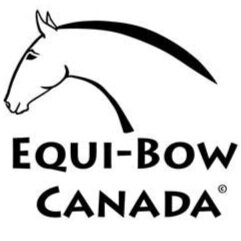YOUR EQUI-BOW SESSION
You’ve decided Equi-Bow would be of benefit to try on your horse, but wonder what happens inside of a session with your Certified Equi-Bow Practitioner or Equi-Bow Practicing Student.
what happens in an equi-bow session?
Let us take you through the general process so you have an idea of what to expect. Each CEBP and Student are taught in our Foundation Course about professionalism, ethics and boundaries.
Let’s have a look at what to expect!
History of your horse (detail of history will depend on whether you are a new client or existing and/both whether you are seeing a CEBP or Student)
Body Assessment of Horse (light touch, palpation, observation)
Based on assessment, apply necessary Equi-Bow protocols
At end of session, share any relevant insights, notes, homework, etc
Arrange next appointment/next steps
See below for a few more detailed answers to frequently asked questions!
FAQ
HOW DOES EQUI-BOW WORK?
Equi-Bow may well be one of the single most important tools we have to facilitate healing of the whole body. Held patterns of pain and physiological dysfunctions are removed by restoring the structural integrity of the body. Equi-Bow incorporates a specific series of muscle and connective tissue movements designed to address a wide range of problems and injuries. Although very gentle and non-invasive, Equi-Bow is incredibly effective.
Every system of the body, internal organ systems as well as the musculoskeletal systems, is addressed through the fascia and nervous system by these gentle, powerful moves. Neurological impulses are sent to the brain, which is then given time to integrate the information. The nervous system is then able to reset the body for optimal benefit.
Respecting this feedback loop is essential to allow the body to restore its own natural balance. Benefits are usually apparent within two to three sesssions, even when long-standing conditions are being accessed. Equi-Bow results are long lasting and profound.
What should I expect to see during an equine session?
The Equi-Bow technique is taught as a light touch technique performed using fingers, thumbs or the hand, which disturbs the superficial fascia and underlying structures. After a series of moves are made, the practitioner moves away from the horse for a “pause” of a varying length of time. This pause allows the horse’s body to absorb the message sent by the moves and allows the practitioner to observe the horse and determine if further action is required.
Hands-on work usually lasts between 45 and 60 minutes per session. Horses often appear deeply relaxed and at ease during and after a session. One can usually feel increasing warmth and a change in tissue tension.
Is there a difference between a CEBP and STUDENT session?
While the sessions will be similar the student session will be focused on the level of training they are currently at. Our EB100 Students can perform a Foundational Body Balance which includes some hind end, midsection, neck and head movements. As Students work through their EB200-500 courses they will be able to add in different protocols. You are welcome to ask the Student what level they are working at. Students will most likely move through a specific set of protocols based on the level they are working on Case Studies for.
CEBP Professionals have completed their training and are certified. In assessing the horse, they will determine what set of protocols will be most beneficial for the horse at each session.
Do I need to do anything to prepare?
The horse should be in a quiet section of the barn or have a session during a quiet time in the barn. The body will have a lot to process during this time and it is not the best for the horse to be interrupted.
Your horse should plan to have time to “rest and digest” after their session with access to hay and water.
What happens after a session?
The horse’s nervous system and body will continue to integrate the message over the following five days to a week. Keep in mind that the touch is a subtle, gentle reminder to the body to relax, through messages to the brain. Messages from other types of bodywork can “erase” the message.This is similar to the writing on a blackboard, which can be wiped away with a chalkboard eraser. For this reason, it is optimal to plan Equi-Bow sessions around all other kinds of bodywork, farrier or dental work, as this may interfere with the subtle nerve impulses that are reprogramming the body.
Equi-Bow practitioners are trained to work with other professionals to optimize results for the horse.
What sort of issues can be addressed with equi-bow?
When restrictions and mis-alignments of the fascia and tissue are released, performance is optimized. In the equine field, Equi-Bow has been seen to address many issues in the realm of structural, physiological, performance and behavioural.


